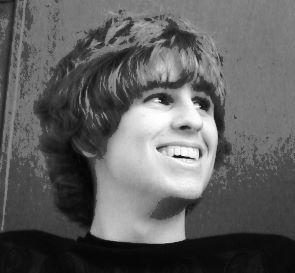A Wizard of Earthsea is a very nearly perfect book. Its plot’s finely balanced symmetry, the exceptionally clear and unburdened prose, the sheer thrill of the story. It’s a true classic. The edition I have on hand is only 132 pages, and Le Guin does more with that small amount of space than most writers could with 500 or 1000 pages. A Wizard of Earthsea is one of those few cases where fantasy has transcended its genre to become simply literature.
Ursula K. Le Guin was the daughter of anthropologists Alfred Louis Kroeber and Theodora Kroeber. The influence of anthropology threads throughout Ursula Le Guin’s fiction. She, more than anyone else I’ve read, writes invented cultures and civilizations with a sense of reality. In her Earthsea books, the world is an enormous archipelago of islands set in the middle of an endless sea, and the peoples who inhabit the world are very rustic. They are fishermen, farmers, smiths. The main character is a goatherd. Earthsea is a Bronze Age or early Iron Age society, and Le Guin doesn’t use magic to make the setting grandiose or unrealistic. Instead, the people rely on magic in small, practical ways, such as putting a wind into the sail of a ship.
The story of A Wizard of Earthsea is elemental, fundamental. Duny the goatherd, born on the isle of Gont, comes to realize as he grows up that he has a great talent for magic. He defends his village from attackers, and a wizard gives him his true name: Ged. The village witch teaches him a few tricks, and he learns to call sparrowhawks from the sky, such that people begin to call him Sparrowhawk. Ged grows increasingly arrogant with age and experience, and increasingly powerful. He goes to learn on the wizards’ island of Roke, and there, in an angry contest with a fellow student, inadvertently summons a shadow which claws at his face leaving permanent disfiguring scars. He flees the school on Roke, running from the shadow. Ged has a series of adventures around Earthsea, but all the while he is pursued by the shadow which Ged cannot stop until he learns its true name. Finally, he determines to turn around, stop running, and meet the shadow. The shadow, once Ged starts pursuing it, runs from him. Ged follows it across the sea, further than anyone has ever sailed before, and finally catches it. In the middle of the ocean he names the shadow with its true name: Ged.
Pound-for-pound, I’m not sure I’ve ever read a more powerful story. The obvious moral implication of the climax, that we all have a dark side we have to face and identify ourselves with to prevent it making us its prey, isn’t so overwhelming that it strips the story of all its magic and makes it a simple parable. Even after receiving that deliberate message, I still feel like I’ve experienced a legend full of suggestion and unspoken significance. Le Guin does something in this book which might be the most unlikely task any writer can accomplish – she creates a new myth. A Wizard of Earthsea draws on Jungian archetypal psychology, anthropology, Taoism, and Tolkien. It’s never been matched, as far as I know.
A Wizard of Earthsea
Ursula K. Le Guin
Gollancz, 2018 (first published 1968)


